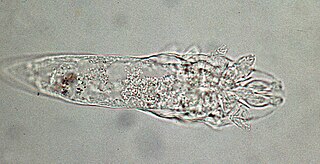RF energy gets converted to heat when it hits the deep layers of the skin. By heating up the water and protein in our skin RF helps to rebuild the collagen matrix and stimulate elastin production.
Benefits of Radio Frequency treatments:
- Tightens lax skin
- Promotes collagen production
- Improves skin texture
- reduces fine lines
- stimulates blood circulation
- increases skin elasticity
Some skin tightening can be noticed immediately after treatment with the results improving within the following months as new collagen is produced.
Radio Frequency Devices
There are a few different radio frequency devices:Monopolar
In monopolar devices the energy runs from the treatment head to a ground pad located on a distant part of the skin. The energy can penetrate up to 20mm deep.Thermage™ is the best sample of monopolar RF device. Was also the first RF treatment in the market.
 Thermage tends to be quite painful and often the skin becomes red and blotches and bruises may appear after treatment. They usually clear within a few days.
Thermage tends to be quite painful and often the skin becomes red and blotches and bruises may appear after treatment. They usually clear within a few days.Bipolar
Bipolar Radio Frequency devices feature the two poles in the one hand-piece, the energy penetrates between 2mm and 4mm into the skin making it safer to use because it controls the energy between the two poles and confines it to the deep layers of skin.Multipolar
Multipolar devices combine a different number of bipolar and monopolar systems.So far, it has not been scientifically established which system offers the best option for skin tightening.
Bipolar RF with IPL
The Elos system combines bipolar radio frequency with intense pulsed light to deliver more effective treatments for a number of skin concerns.This system can also target pigmentation, broken capillaries and acne scars at the same time that stimulates the collagen production and tightens the skin.
Side Effects of RF
The original protocols use very high energy settings with the area being treated in only one pass. Although very effective, there were many side effects some minor, such as redness and bruises which would clear in a few days; and some mayor such as blistering, burns, and fat atrophy.Fat atrophy happens when the underlying layers of the skin are overheated causing a depression and giving a sunken appearance.
New treatment protocols use low-energy settings and multiple-pass. These protocols make the treatments extremely safe, with very little or no pain, and no downtime. The only side effect being a mild redness in some cases.
Low energy and multiple passes have proven to be even more effective than the original protocols with 87% of patients noting immediate skin tightening and 92% reporting skin tightening over the following 6 months.
What can I expect when going for a Radio Frequency Treatment?
The procedure will vary depending on the device being used.For Thermage and monopolar devices a topical anaesthetic cream may be applied to the area to numb it.
You will be fitted with a self adhesive return pad to your stomach or back.

Depending on the energy level to be used a treatment grid ink transfer may be applied to your skin to guide the operator and avoid treating the same area more than once.
On bipolar devices using low-energy, multiple-pass the anaesthetic cream is not necessary, neither is the return pad or the treatment grid.
The therapist will start by cleaning your skin from any makeup and oil.
She will then apply a cooling gel to your skin to help guide the handpiece and make the treatment more comfortable.
She will start treating each area by sliding the headpiece with circular and uplifting motions. You will fill a warm sensation. There is usually no pain, however in sensitive areas where the skin is close to the bone you may experience like the flick of a rubber band.
At the end of the procedure a cooling lotion or masque may be applied.
How many treatments do I need?
For greater results 4 to 6 treatments are usually recommended. Treatments are spaced between 2 and 4 weeks.The effects of the treatment can be seen right away with the skin continuing to improve during the following months.

